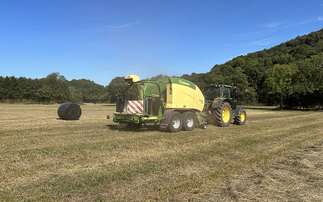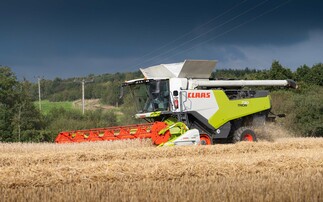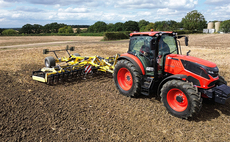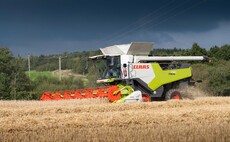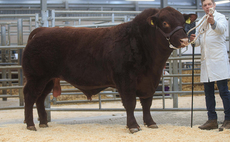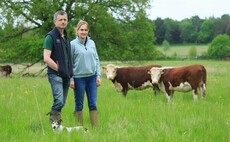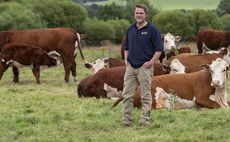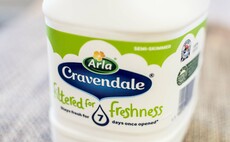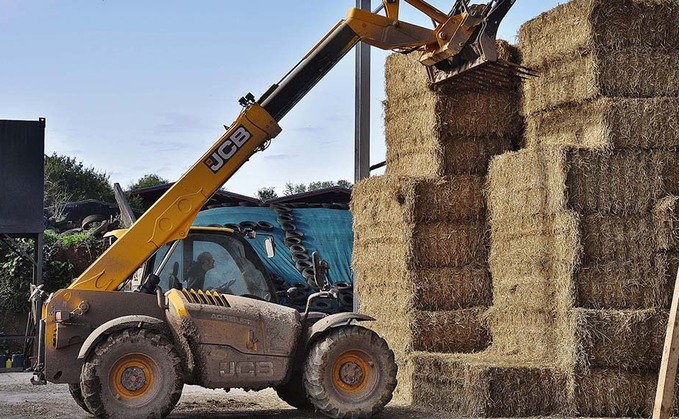
Featuring a new cab with lower noise levels, greater comfort and dramatically improved overhead visibility, JCB's latest Series III Loadalls promised many improvements. But do these improvements actually make a difference? Simon Henley visits a dairy farm in Somerset to find out.
The Quick family in Somerset are what you might describe as passionate dairy farmers. Gerald Quick and his three sons Chris, John and Tom run an in-door herd of 850 Fresian cows, on a farm which spans 485 hectares.
Here they milk three times a day, which means the milking parlour runs around the clock, with just one hour between each milking to wash down. This means there is always somebody working here and having reliable equipment to feed, clean-out and bed the cows is absolutely essential.
Back in the 1980's, Gerald Quick was a JCB Loadall man, however, his faith in the British manufacturer's products dwindled after a succession of cracked boom issues. Disconcerted, Mr Quick switched his loyalty in the direction of Manitou, specifically favouring the rear-engined ManiReach 626 and 628 models.
His penchant for French telehandlers eventually subsided with the arrival of the EN15000 load movement monitor legislation, which in Mr Quick's opinion compromised the lift performance of the Manitou handlers. A few years ago, at the suggestion of Rob Wall, who works for JCB dealer Smart Ag Services, Mr Quick decided to give the Uttoxeter manufacturer another try.
"The difference in the lift performance of the JCB was amazing," says Mr Quick. "Having been used to the Manitou JSM palm grip joystick, the JCB design did take some adapting to, but since then we have never looked back."
Replace
The Quick family run two telehandlers; a 2018 Loadall 541-70 Agri-Super and the latest 2019 Loadall 542-70 Agri-Super Series III. Every two years they replace the oldest of the two machines, which as Mr Quick explains will have generally clocked in the region of 3,500 hours by the time they trade it in.
He says; "The newest machine handles the lion's share of the work, leaving the older machine on lighter duties. During the first 12 months, we would expect the new machine to clock 2,000 hours, while the older machine will do around 1,500."
In a typical day, the newer telehandler will spend between four and five hours loading the diet feeders used to feed the cows. The second machine will be on bedding detail, which is executed with a headstock-mounted Spread-a-Bale dispenser.
In between feeding and bedding duties, the handlers are used for tasks such as cleaning out livestock yards, transporting bales and silage and moving livestock, in addition to supporting the arable side of this farming enterprise, which grows grass, maize and a moderate acreage of grain crops to be used on the farm for feed.
"We always opt for the extended 4,000 hour warranty package, but we don't specify a service contract. We prefer to pay for service work as we go along. To be very honest, we have not had any major issues in terms of warranty repair," says Mr Quick.
"The most common problem we find is that the rear mudguard brackets are prone to breaking. You can see them constantly vibrating and eventually the metal fatigues and breaks."
With the previous model on-hand to compare with the latest Series III machine, the Quick family are certainly qualified to provide an objective comparison between the old and new models.
In terms of the machines' performance, Gerald Quick's son John claims there is absolutely nothing between them. It is only when you are in the driver's seat that you notice where the changes have been made.
Improvements
John says; "The cab improvements have essentially bought the Loadall cab up to date. The previous cab was showing its age, although it was never uncomfortable. Overhead vision in particular has benefited from the introduction of the curved windscreen in the Series III cab.
"Ironically, in muddy conditions you do get a dirty patch right in your line of vision when you look upwards. Even though JCB has fitted two windscreen wipers, they miss a section of the window just in front of the overhead roof guard.
"Another improvement is the data screen monitor," adds John.
Functions
"The screen makes functions more accessible and it is much easier to read. I also like that the switchgear has a quality feel to it. You don not feel like you are going to break something in this cab."
If there is an Achilles heel on the Series III Loadall, according to John it is the new model's pick-up hitch.
Technically, it is a stronger design with a greater payload. However, in practise, as John has discovered, there is a fundamental flaw in its design. "The new hitch features a double latching system on either side of the hook.
The latches which lock the hook in place are connected by a flat metal bar which is attached (on one side) to the release cable. The problem is that this release bar is angled where it can make contact with the trailer drawbar if you happen to be making a tight turn into a building or gateway.
"It took us a while to work it out, but on certain trailers, as the drawbar touches the release bar, it lifts it and unlocks the latches. Once this happens, the hitch drops and the trailer comes off the hook. You can actually see the marks where the drawbar hits the release bar."
One of the new model's features which both father and son acknowledge as being an improvement, is the two-handed locking pin release system for the boom carriage. "This is one of those features which should have really been introduced before," says Gerald.
"The requirement of two hands to unlock the pins means you are eliminating the chance of an operator inadvertently unlocking a bucket or fork and having it drop on the floor. It is easy to use, and once you get used to the idea, it becomes second nature.
"Overall, the new Loadalls bring much wanted improvements over the previous series, particularly in the cab department."
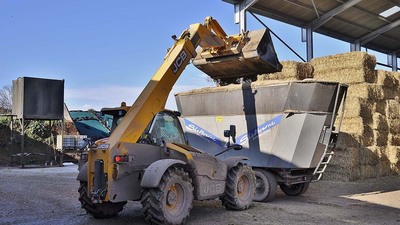
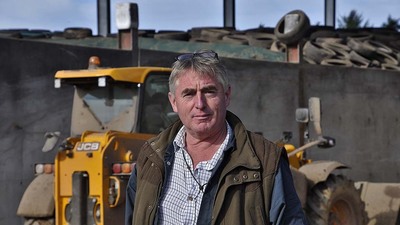
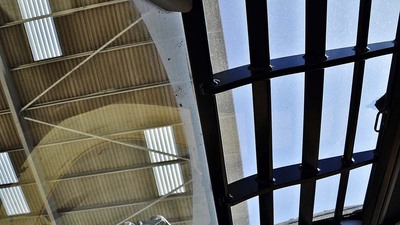

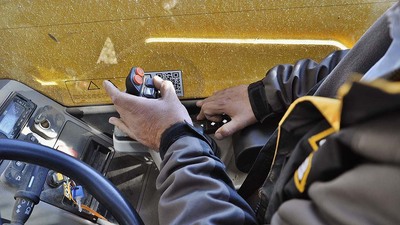
Telehandler specifications:
Model: JCB 542-70 AgriSuper Series III
Engine: Four-cylinder, 4.8-litre, JCB EcoMax
Power: 145hp
Torque: 560Nm at 1,500rpm
Transmission: Autoshift six-speed powershift
Hydraulic output: 140 litres/minute
Maximum lift capacity: 4,200kg
Maximum lift height: 7.01m
Farm facts:
Name: Quick & Sons Farm
Location: Taunton, Somerset.
Farmed area: 485 hectares (1,200 acres)
Type: Dairy










